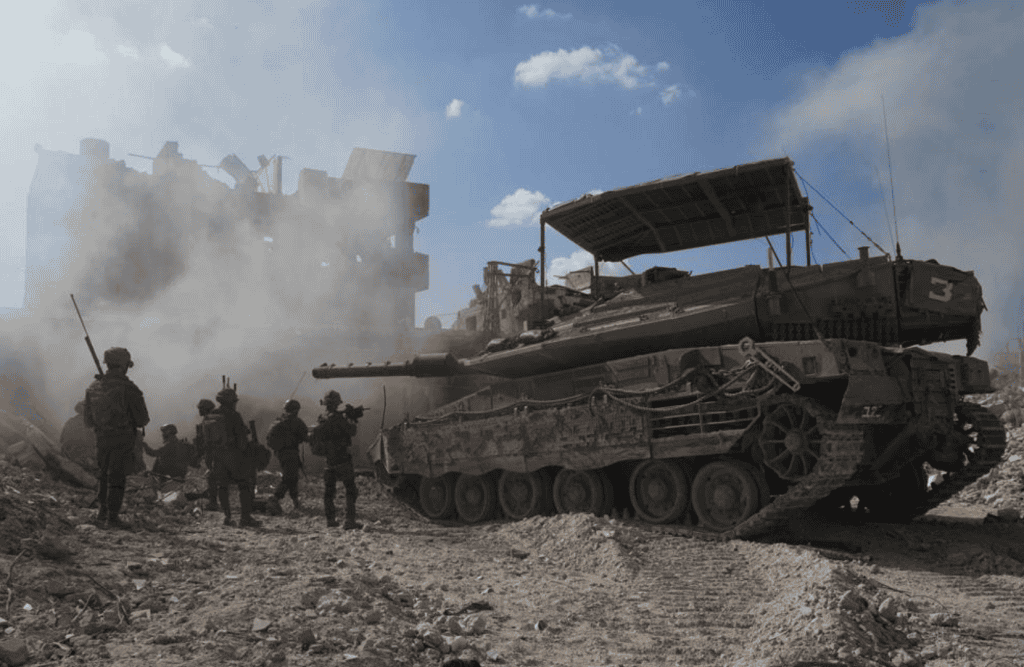
The Israel Defense Forces expanded operations in the southern Gaza city of Khan Younis, a key stronghold for Hamas. Israeli forces, led by the 98th division, including commandos and paratroopers, have been fighting in the city since early December. The battle has been slow going in part because Israel has transitioned to a more low intensity type of fighting over the last month. This meant less airstrikes, more precision raids and more use of forces such as commandos and elite units. Hamas leader Yahya Sinwar is from Khan Younis and what remains of Hamas’ intact battalions continue to fight in the city.
Khan Younis covers a large area in southern Gaza. The city essentially sits astride a swath of Gaza such that any movement north and south has to go through the city. When Israel was fighting in the north, two main humanitarian evacuation corridors existed. Gazans could either flee along the coastal road, called Rashid, or via the Salah al-Din road, heading south to Khan Younis and then west to a humanitarian zone near the sea. When IDF forces entered Khan Younis, they set off from the area of Kissufim on the border, the site of an Israeli border community and an army post. The IDF then used precision air drops to supply the forces in the city, because the road to the city was exposed to fire.
Now, the IDF has invested itself deep in the city, uncovering terrorist infrastructure. The units are also backed up by more tanks from the 7th brigade, as well as Givati brigade infantry and other units. In addition, Israel targeted terrorists in areas closer to the border in Khirbet Ikhza and Khuza’a, areas used by Hamas to attack Israel on October 7. Understanding this geography is important, because the deeper the IDF operates in and around Khan Younis, the more that IDF forces will now sit astride much of southern Gaza. This will leave Hamas forces scattered, either in Rafah near the Egyptian border, or near the humanitarian area of Mawasi on the coast west of Khan Younis, or in pockets in the center and the north.
Reports say the IDF is operating in western Khan Younis in a significant operation involving multiple brigades. This operation is in contrast to the trend over the last three weeks of transition to lower intensity conflict. It is also in contrast to the withdrawal of some reserve units from Gaza and redeployment of the large 36th division out of Gaza after 100 days of combat.
In Khan Younis, the 98th division also revealed a large tunnel. The IDF says that the tunnel included an area where they suspect Israeli hostages were being held. “The length of the tunnel was about 830 meters and it was about 20 meters deep. The entrance to the tunnel was booby-trapped, and inside it there were many obstacles, explosives, sliding doors and blast doors. While the soldiers were advancing through the tunnel, they encountered a number of terrorists. The soldiers fought against them and eliminated them. When the soldiers reached the tunnel, the hostages were already gone, as they were moved to another location,” the IDF said on January 21. Footage was also released of the extensive tunnel.
In other operations in Gaza, the Israeli navy carried out strikes on terrorists along the coast. An IDF brigade operated in the central Maghazi area of Gaza. The IDF said a “a number of terrorists who attempted to ambush IDF troops were also identified and struck by an aircraft in a joint ground and aerial operation,” in the central area. In northern Gaza, an airstrike was also carried out, illustrating that threats continue in the north even though the IDF has said most of those areas were cleared of Hamas fighters. In another area in northern Gaza known as Daraj Tuffah, Israeli forces found a training facility which included a “swimming pool where the terrorists trained for maritime raids, a simulator for mortar and weapons fire against IDF soldiers, and offices belonging to the commanders of the [Hamas] post.”
On January 22, Israel announced that 200 soldiers had now fallen since ground operations began in Gaza on October 27. In total, 535 IDF soldiers have been killed since the Hamas attack on October 7. Most soldiers were killed on October 7 itself, with many others killed during the first month and 12 killed in Hezbollah attacks on northern Israel.







